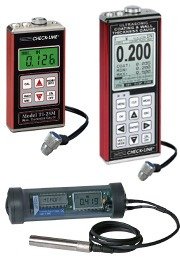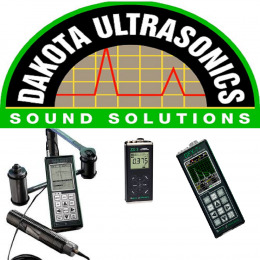Wall Thickness Gauges
Understanding wall thickness measurement can be confusing if you’re not familiar with the available technologies. In simple terms, these NDT (Non-Destructive Testing) instruments are used to measure the thickness of a material without cutting or damaging it. This is essential for checking the integrity of pipes, tanks, bottles, or any structural component where safety and quality matter.
Checkline Europe offers two main types of wall thickness gauges, each designed for specific materials and applications:
- Ultrasonic gauges: Use sound waves and are ideal for metals and other dense materials where you only have access from one side.
- Magnetic gauges: Work with a small steel ball and are the best choice for plastics, glass and other non-metallic materials, especially when internal access is limited.
If you’re not sure which type you need, start by considering:
- Material: What material you want to measure (metal, plastic, glass, etc.).
- Access: Whether you can access both sides of the part.
- Range: The expected wall thickness range.
Below you’ll find our full range of wall thickness measurement devices, organised by technology. You can also visit our Knowledge Base for a clear explanation of how each method works and what to consider before choosing a model.
Checkline instruments are used worldwide in industry and research for their precision, durability and technical support.



